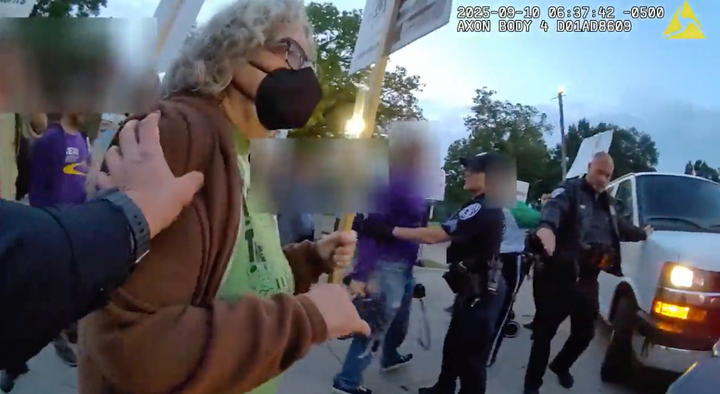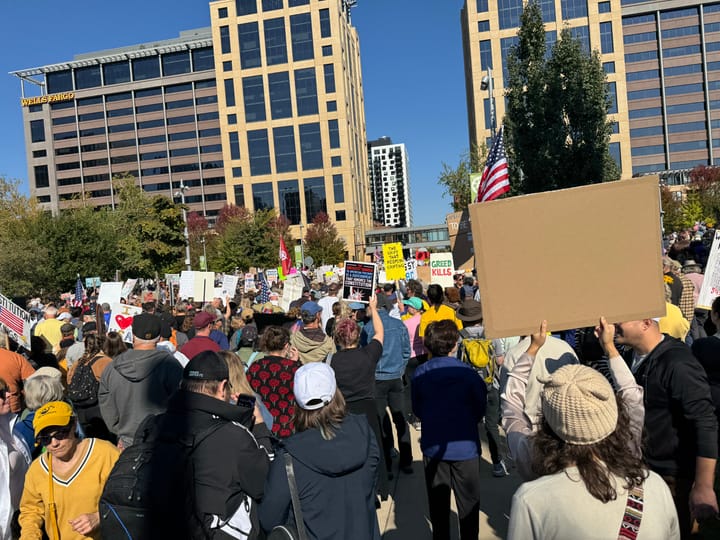Minnesota cop injured man’s eye with riot munition, lawsuit says
According to the lawsuit, Minneapolis has paid out about $5.6 million dollars due to its police department’s illegitimate use of less-than-lethal rounds against residents upset over the broad daylight murder of George Floyd by Minneapolis police officers.

*Disclaimer: Lawsuit complaints are based off one side’s interpretation of events. They should not be considered 100% factual by the public as they are only accusations. Many lawsuits end without a trial or an admittance of guilt by any parties listed in the complaint. Any accusations in the below story come from court documents unless expressly noted.*
ST. PAUL – Dustin Aarvig was 24 years old when a Minnesota law enforcement officer caught him in his sights and shot a 40mm less-than-lethal round at his head, injuring his eye and causing permanent damage, according to a lawsuit filed last week in Ramsey County District Court.
Aarvig names the Minnesota Department of Public Safety, its former Commissioner John Harrington, former Minnesota State Police Col. Matthew Langer, and the unknown officer who fired the round that ruptured Aarvig’s eye on May 30, 2020, in his lawsuit.
Aarvig’s lawsuit is one of many that arose from the overzealous response of local law enforcement in the Twin Cities, which led to protestors burning down the Minneapolis 3rd Police Precinct.
“Police shot people with 40mm rounds, often in the head, face, or eye, not because those people were engaged in any assault of serious property damage, and not because the people shot were aggressive, non-compliant person, but as a result of poor training and/or poor supervision,” Aarvig wrote in his complaint.
While local cops were directed to use their 40mm launchers to shoot a round at a person’s head only if there was a threat escalating to deadly force, an officer fired a 40mm round at Aarvig while he was holding a camera on the I-35 bridge above Lake Street in Minneapolis.
A 40mm less-than-lethal round is an impact weapon used by police to subdue residents and is fired by a grenade launcher.
While marketed as a better alternative to firing live rounds at people, impact weapons are the second leading cause of hospitalization or death for less-than-lethal options used by police, according to one 2024 study funded by the National Collaborative on Gun Violence Research. Police dogs are number one.
The burning of the 3rd precinct followed decades of police abuses in Minneapolis, which included a law enforcement metro gang task force that engaged in armed robbery.
According to the lawsuit, Minneapolis has paid out about $5.6 million dollars due to its police department’s illegitimate use of less-than-lethal rounds against residents upset over the broad daylight murder of George Floyd by Minneapolis police officers.
Despite Minneapolis paying the brunt of settlements for police violence during the uprising, Aarvig contends in his lawsuit that it was not a Minneapolis officer who shot him.
No Minneapolis cops were within 300 feet of him, Aarvig wrote in his complaint, though many state cops, armed with 40mm launchers, were.
Aarvig was transported by ambulance to the Hennepin County Medical Center following the attack by law enforcement.
He was not engaged in aggressive behavior, assault or serious property damage, nor was he around anyone who was, Aarvig wrote in his lawsuit, adding that the unidentified officer failed to give him any commands prior to the shooting.
No officers have been prosecuted for the civil rights violations outlined in the numerous lawsuits that were filed after the uprising, though several were admonished by superiors and one was fired for shooting a Black man with a 40mm round while riding in an unmarked police vehicle.
Aarvig is represented by attorneys Andrew Irlbeck and Tim Phillips.
As of Nov. 4, no answer has been filed and trial date has not been set.




Comments ()